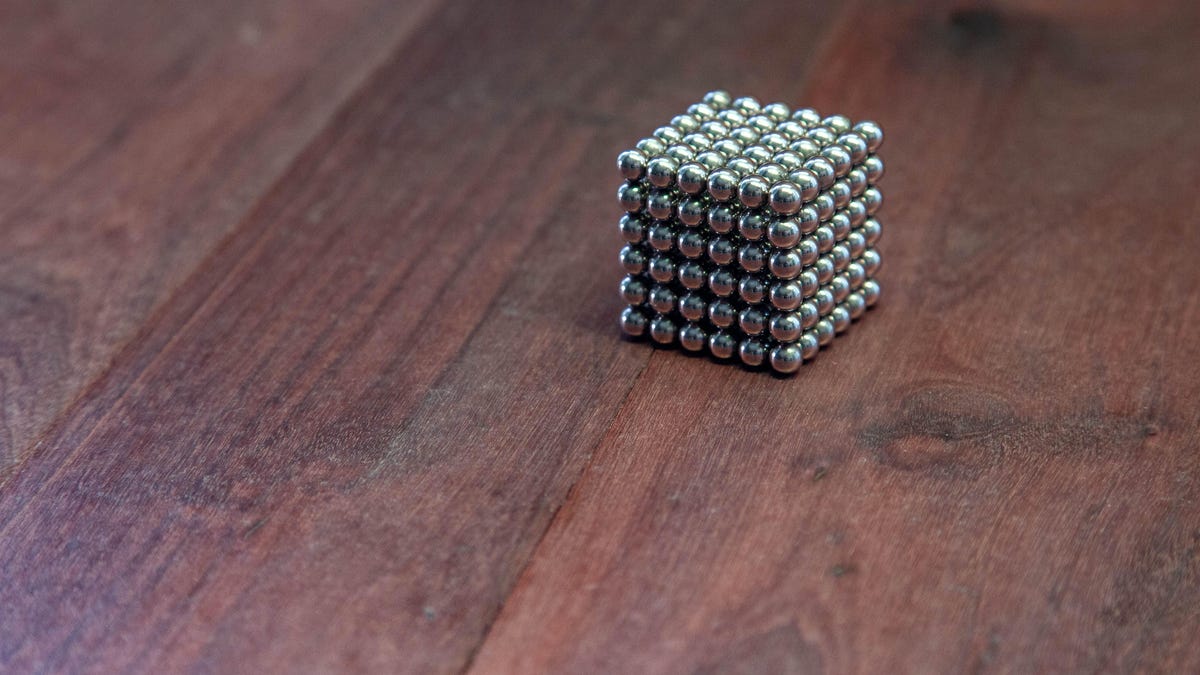Your Kids Are so Stupid They Eat Magnets

You’ve probably heard that strong little magnets are dangerous for children. You would never give your baby a neodymium magnet; you know that two of them, if swallowed, can combine inside the body, which can cause serious injury. And yet, according to a recent survey presented by the American Academy of Pediatrics, children are still swallowing them at an alarming rate.
“Parents almost never think that their child is ‘dumb enough to swallow’ magnets,” pediatrician Minna Vick said in an American Academy of Pediatrics press release about the results of a new study on magnet-related injuries. “But children do this more often, despite adult supervision and even when adults know that these magnets are potentially dangerous.” And that includes kids who you think are old enough to know better.
Why are rare earth magnets so dangerous?
The magnets that doctors are most concerned about are rare earth magnets. They are made from elements such as neodymium, which are classified as “rare earths” on the periodic table.
Rare earth magnets are much stronger than a typical refrigerator magnet, and because they are so strong, they can be made in very small sizes. This means they are easy to swallow (or otherwise enter babies’ bodies) and, once ingested, are strong enough to cause serious harm.
If two strong magnets connect inside a body, they can compress anything between them. Imagine magnets in two different loops of the small intestine meeting each other; the intestine itself will be sandwiched between them.
This type of injury has resulted in some children requiring surgery and several deaths. Despite warnings , the number of injuries from magnets is not decreasing. The CPSC reports that from 2010 to 2021, 26,600 cases of magnet ingestion were treated in hospital emergency departments, and that the number of cases has been increasing since 2018. The AAP previously reported that more than half of children who swallow magnets require hospitalization and often surgery.
How to tell if a magnet is dangerous
As a general rule, the smaller the magnet, the more important it is to keep it out of children’s reach. The Consumer Product Safety Commission has set a rule, applicable to toys for children under 14, that any magnet small enough to penetrate the body must weigh less than 50 kg 2 mm 2 – in other words, it cannot be a very strong magnet. Therefore, toys intended for children must be safe. However, the CPSC regularly has to send letters to companies that do not follow the standard. A list of magnet violations can be found here .
The most problematic magnets seem to be those that come in small kits with dozens or hundreds of tiny magnetic balls or figures. The magnets are easy to swallow and are strong enough to cause harm. These sets are designed for adults and older children, so you won’t think of them as toys for toddlers.
But the problem with these kits, as the American Academy of Pediatrics points out, is that they contain so many small balls that you won’t notice if a few are missing. Your child may find one on the carpet and then another. (They may also swallow one magnet today and another metal object tomorrow.)
The rules for using magnet sets have changed over the years. They were illegal for a while, from 2014 to 2016, and during that time the number of injuries caused by swallowing magnets decreased. Then the rule was lifted and the number of injuries increased again. The new version of the rule took effect at the end of 2022 , but many old products still exist.
How to protect children from rare earth magnets
“Don’t give your children rare earth magnets” is an important safety precaution, but it’s the first thing you need to know, not the only thing . The AAP recommends removing powerful magnets from the home entirely if you have small children or locking them away. This goes double for magnet sets: “Don’t use large magnet sets. It’s too difficult to determine if some of them are missing.”
They also recommend talking to older children and teens about ways to play with small magnets. It’s fun to attach magnets to either side of your tongue, lip or nose and wear them as jewelry, and there are even “magnetic earrings” sold for this purpose. But they can be accidentally swallowed or inhaled—don’t laugh, kids have done it—and your teen will have the same potentially fatal problem as a toddler who swallowed magnets on purpose.
Another important warning is to consider swallowing a magnet if your child says they have a tummy ache. Abdominal pain, vomiting and fever may result from the damage that magnets cause to the body. If you think your child may have swallowed a magnet, seek emergency medical help immediately.